In many years of amateur (at best) photography, I’ve almost entirely used digital since I started with a compact in 2005 or 2006. But recently I’ve been increasingly keen to try going ‘analogue’. Largely as a result of reading 35mmc, I might add!
I already had a nice Olympus Trip 35. It was a present to me from my parents, a year or two, I think, before I went digital. Back then, the cost of film and development, as well as not really understanding how it worked – at the time I would have been 11 or 12 – meant I didn’t do much with it. It sat in a cupboard for the next 15 years (give or take a few) while I progressed through digital compacts, bridge cameras, and finally to mirrorless where I’ve been for the last decade or so. It doesn’t really seem that long.
Anyway, having decided to try my hand at film I lost no time in ordering some supplies. Not much really, a few rolls of film, a tank, a thermometer and a packet of monobath developer/fixer. Also with this project in mind I acquired a set of classic bellows (the sort used for macro photography) with a slide copier attachment, for digitizing my negatives. I’d never have thought of this option without this great article on 35mmc by Christof Bircher. I can use it for macro too!
At this point I’ve shot, developed and ‘scanned’ 2 rolls of HP5+. I settled on HP5+ after quite a bit of research as a really good all round option. Latitude for mistakes, good quality, and reasonably priced. One of the cheapest options available in Australia at present actually.
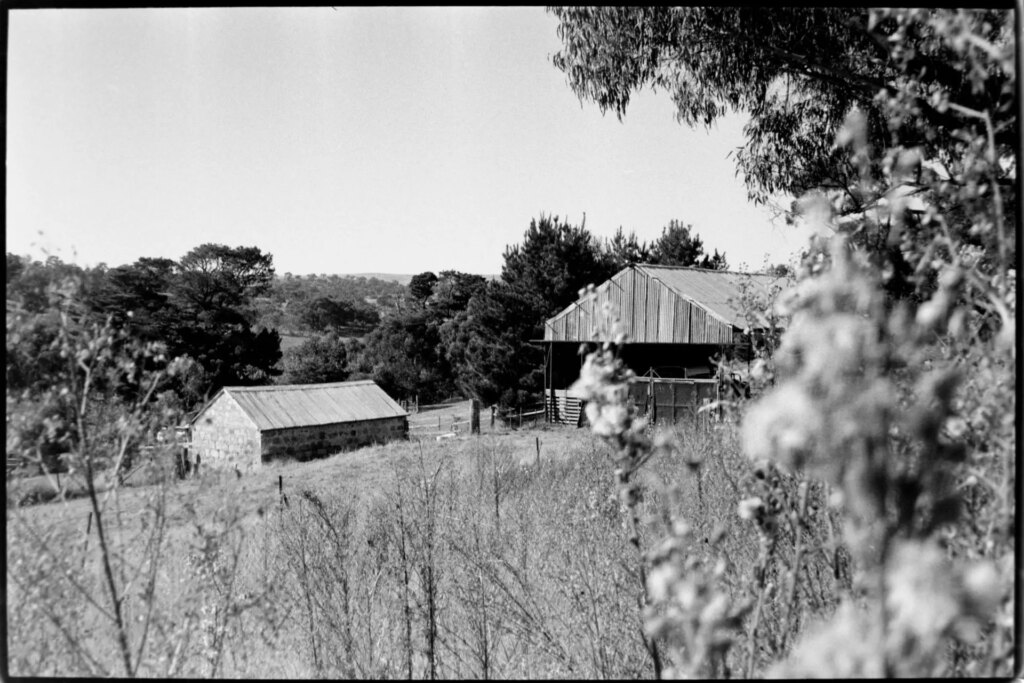
To backtrack a little, I researched the light seals in the Olympus Trip 35 and found that it should have three bits of seal material. They were still sort of there, but didn’t look good. I won’t go into details here, but for the time being I’ve improvised new seals with some black foam that originally came as packaging with a computer component. Seems fine…
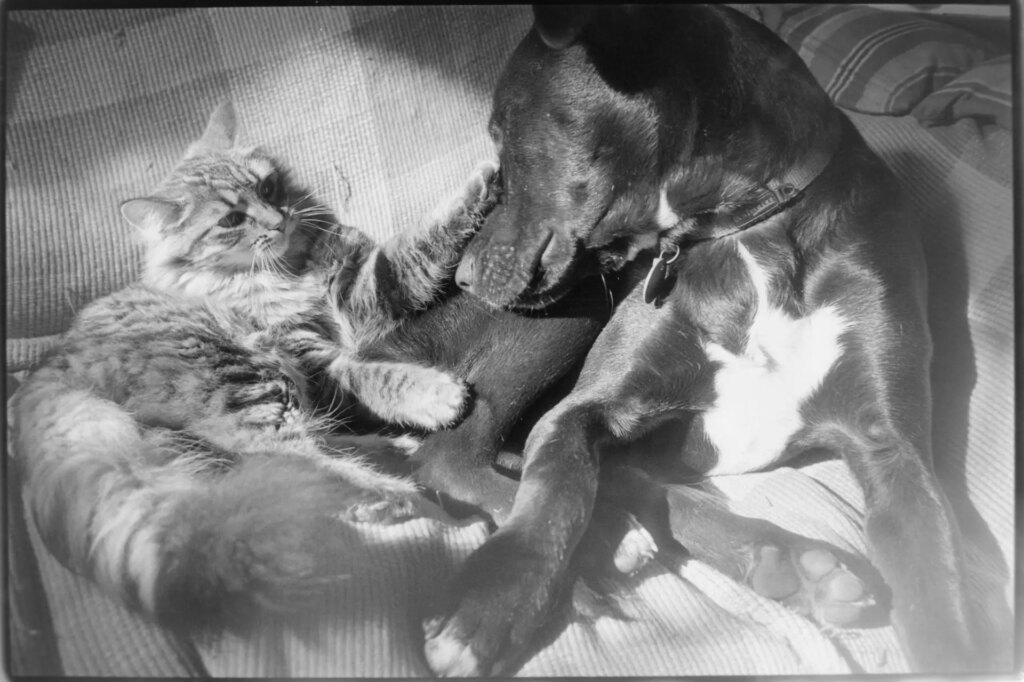
When the film arrived, I loaded a roll into the Trip 35 (not without some trepidation) and started shooting. I didn’t want to take anything too valuable on the first roll as it would be my first time developing, and I wasn’t too confident that it would all go smoothly. So, I snapped away, trying to make nice images but not worrying too much. Most of the images are around a small farm in my area. I used up most of the frames here.
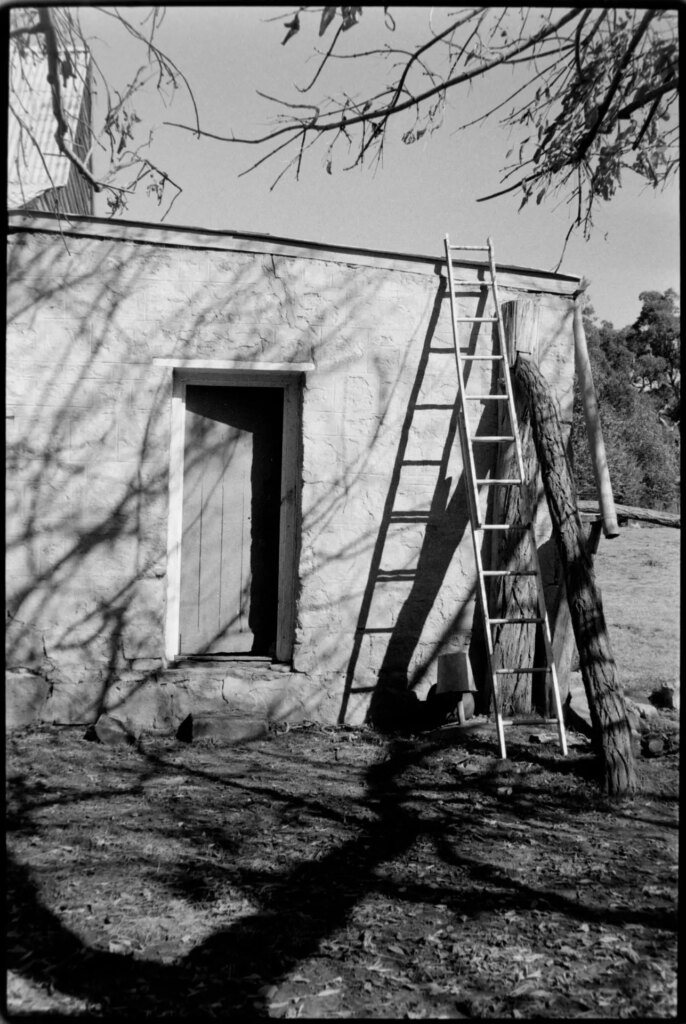
Once I was through the roll I tried to rewind the film leaving the header out, but failed. I wanted to be able to start the film onto the Paterson reel in the light, so looked up Youtube on how to retrieve the leader. Long story short, there’s a few ways, but I managed with a bit of thin plastic cut from a bottle and some tacky adhesive. Not ideal. But it worked.
Next I mixed up my 1L batch of Df96 with distilled water (I bought it as powder) and stored it in a convenient plastic bottle.
In the evening I took the film, the developing tank and a pair of scissors into my bedroom and closed the door and the curtains. 5 minutes later my film was safely in the tank! At this point I reluctantly decided to call it a day, as I was tired and was afraid of messing up the processing stage.
Next morning was cold. Where I live is at around 700m above sea level, close to the Snowy Mountains. We get down to -12℃ or so in winter, and on this morning in May it was -3℃ or so outside. In the room with a sink where I would be developing, the temperature was only 12℃. I was a bit concerned… but I reasoned that a water bath at the right temp would keep things ‘cooking’ nicely.
All went well, following the instructions for intermittent agitation at 26℃. I accidentally let it sit a little longer than the recommended 1 minute at one point, but hoped it wouldn’t be a disaster. I like the fact that the Df96 can be reused quite a few times – less stuff to dispose of! I stored the water from the first two rinses for later disposal as the sink drains into a grey water system. I finished off with a rinse under the tap, then took it through to a warmer part of the house to dry. While impatiently waiting for it to dry I examined the film with a magnifying glass. It looked good, as far as I could tell.
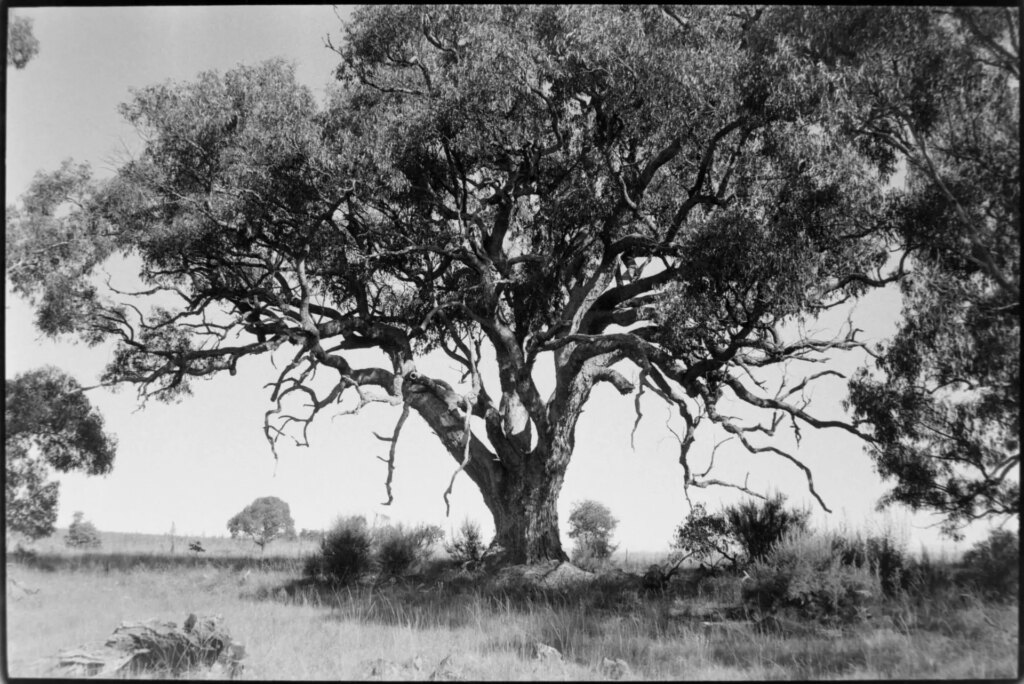
An hour or two later, after breakfast, the film seemed dry, so I set up the bellows and slide copier on the kitchen table, using a manual flash for illumination.
I took the images as raw files, then processed them using the negadoctor module in darktable, which seems to work well. darktable (yes, it’s supposed to be written in all lower case) is my current Raw processor and organizer – it’s not as user friendly as the commercial options like LR, but I rather like it. Plus I like the fact that it’s open source.
So, did it all work?
Well, the images seem good! Technically at least… The grain looks nice – present but not excessive and the tonality and contrast seems fine, although I found that it was very ‘adjustable’ in darktable, to the point where I’m not really sure how HP5 is supposed to look, to be honest. The Pentax SMC M 50mm f1.7 I used with the bellows is one of my favorites in normal use, but it isn’t a macro lens and there is some vignetting, barrel distortion and sharpness falloff. Obviously, I suppose (but I didn’t think of it till I saw it) on the final result the vignetted corners come out lighter as a result of the inversion. Still, overall, I think the results are OK. If I keep doing this kind of thing a better lens may be on the cards in the future.
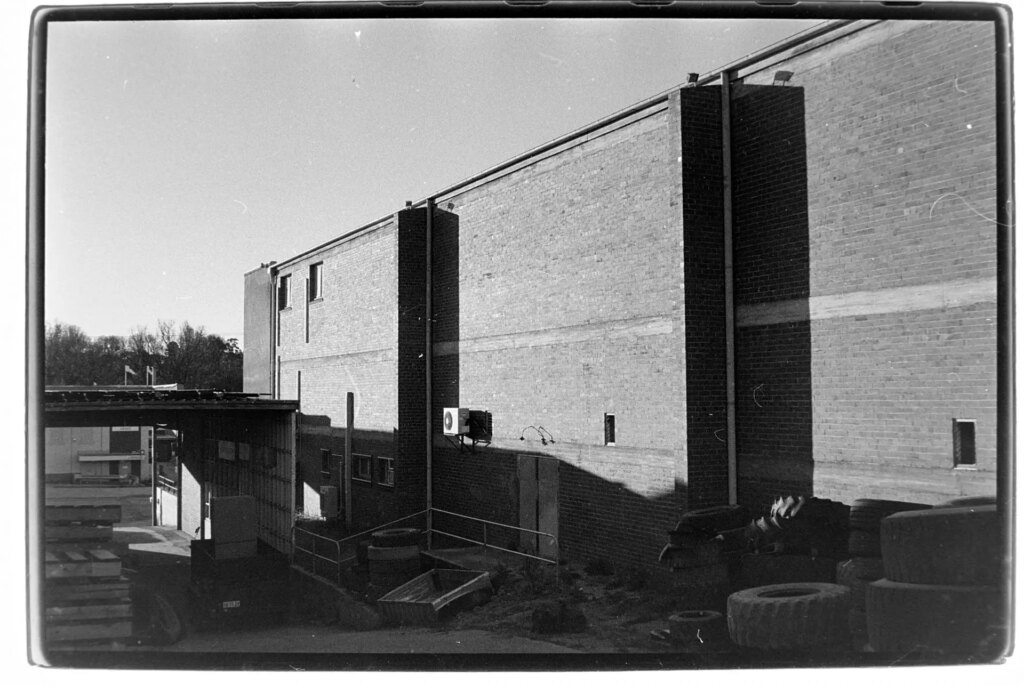
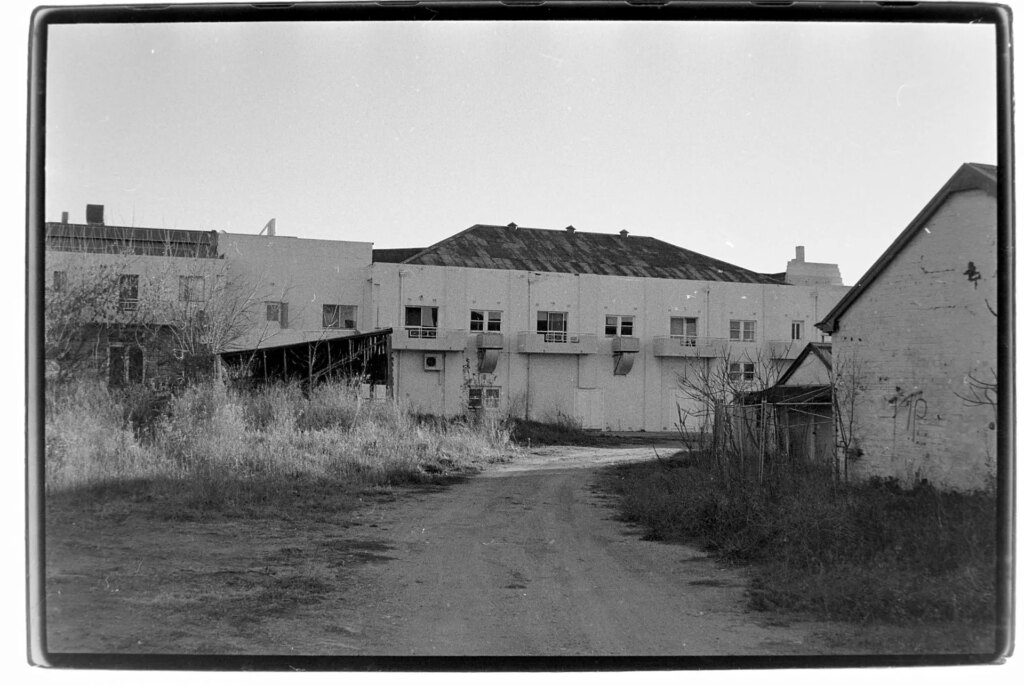
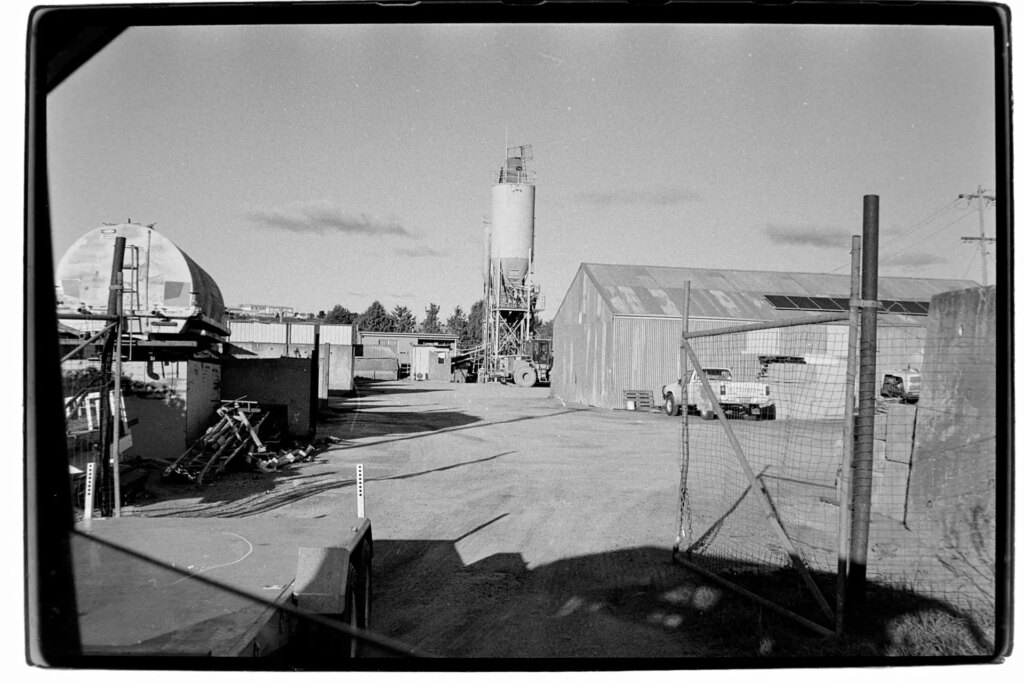
And actually, I’m very pleased with the photos – different to my digital work and the shooting experience is quite different too. More please!
The second roll didn’t go quite so smoothly. The film jammed in the camera on the third or forth frame, and mysteriously fixed itself when I rewound and opened the back. I think I did something wrong in slotting the leader into the take-up spool. On the other hand, I was successful in leaving the leader out when rewinding. But, when I was loading the developing tank I got distracted and started pulling the film out from the canister with the light on… AARGH! Fortunately, I realized what I was doing after only loosing what turned out to be about eight frames…
Next, after developing, I was impatient to examine the photos and grabbed the length of film as soon as it looked dry. I didn’t realize that the emulsion was still sticky… so some frames have got all manner of fluff stuck them, from when I sat down to look at the film. The photos in this article are from both rolls. I apologize for the dust on the scans. Some worse than others…
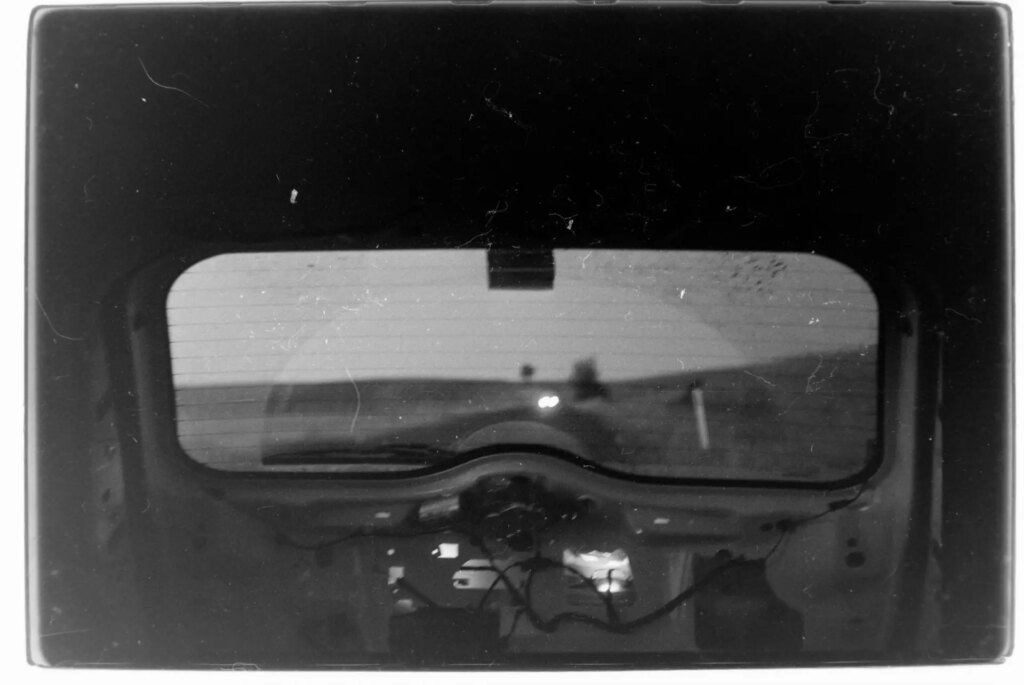
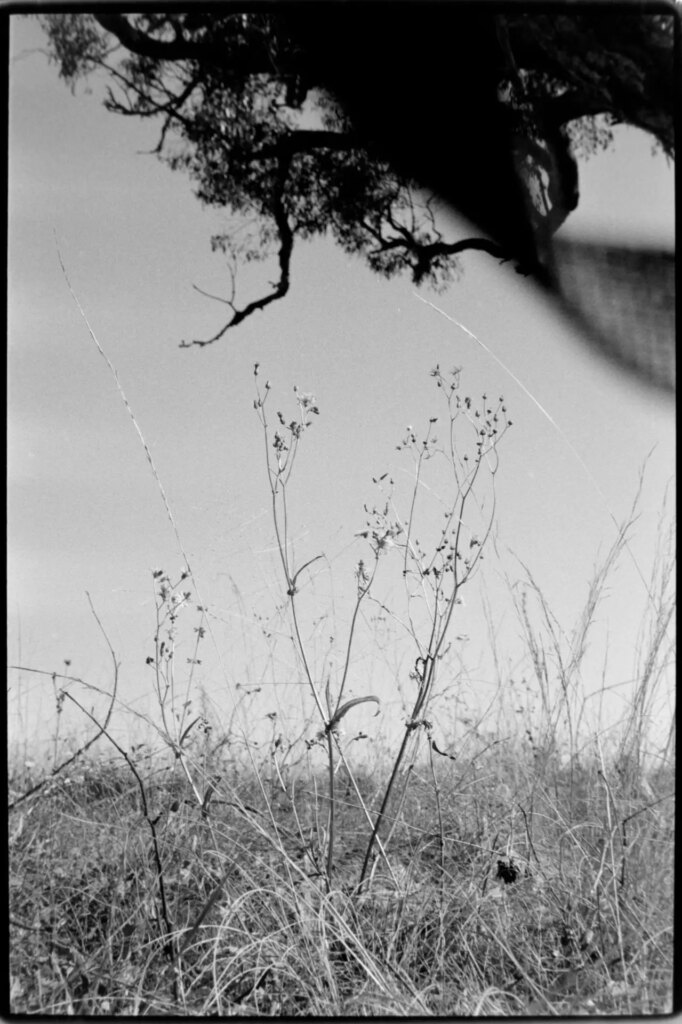
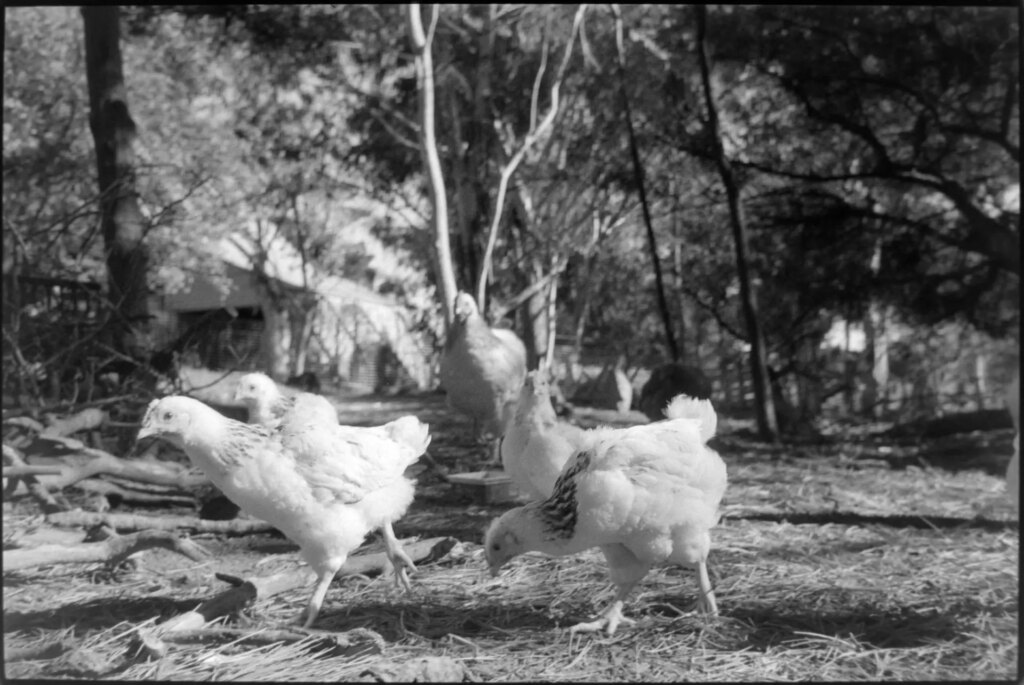
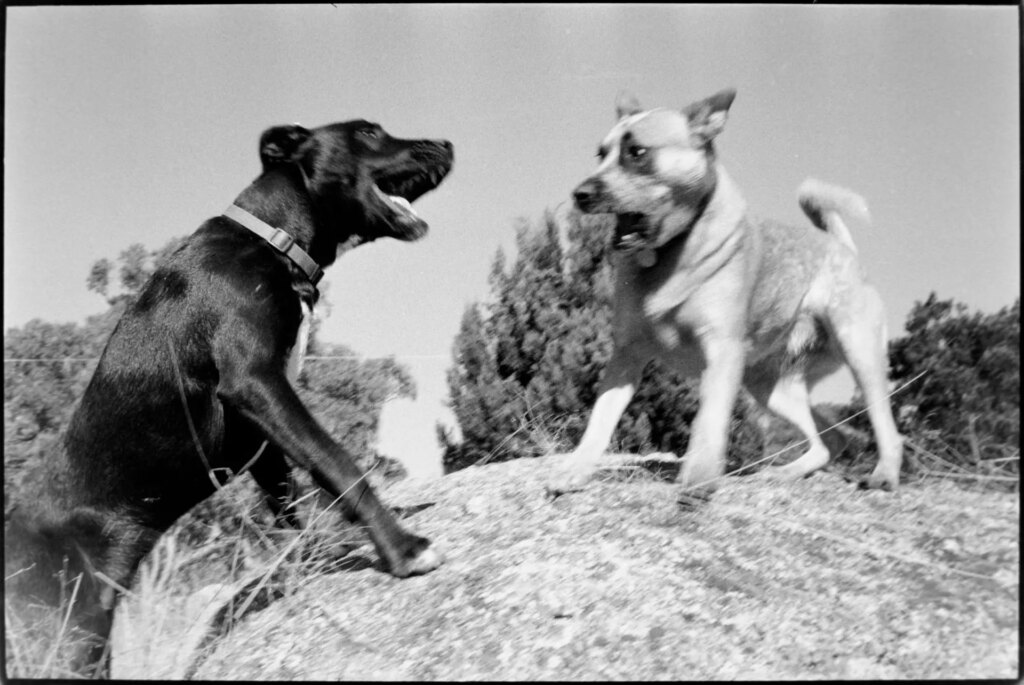
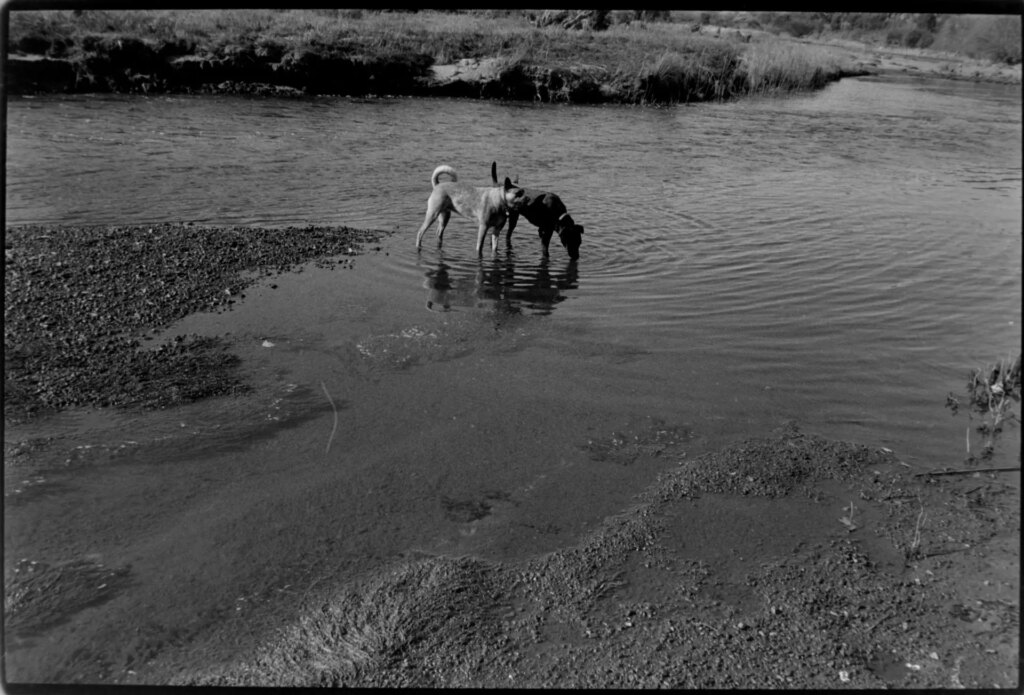
In summary, I’m enjoying the experience a lot. Thinking a bit more about the differences to what I’m used to, I think something that stands out is somehow the ‘finality’ of making an image on film. Compose, adjust focus and exposure, then CLICK. And that’s it! Nothing else to worry about. I’m not really sure how this is different to digital. After all, I don’t have to look at the screen on a digital camera if I don’t want to… and after all, (again) I am digitizing my negatives – there’s a quite a bit of latitude in terms of exposure and contrast in post-processing. Yet the experience is different. In a good way. After re-reading this last paragraph it occurs to me that I seem to have read similar sentiments before, on 35mmc – I wasn’t intending to copy anyone… honest!
I’d like to do a project or two specifically using film – I don’t have any real plans though at this point. I’m also now temped to buy a film SLR… but on the other hand the simplicity of the Trip 35 is very appealing, and I think its limitations could have a good effect in encouraging me to use a consistent style. Dunno yet…
If you got this far, thanks for reading. I don’t have much confidence in my writing skills – so I hope this article has been readable!
Steven
You can see more of my images on my rather haphazard (and irregularly updated) Flickr page.
Share this post:
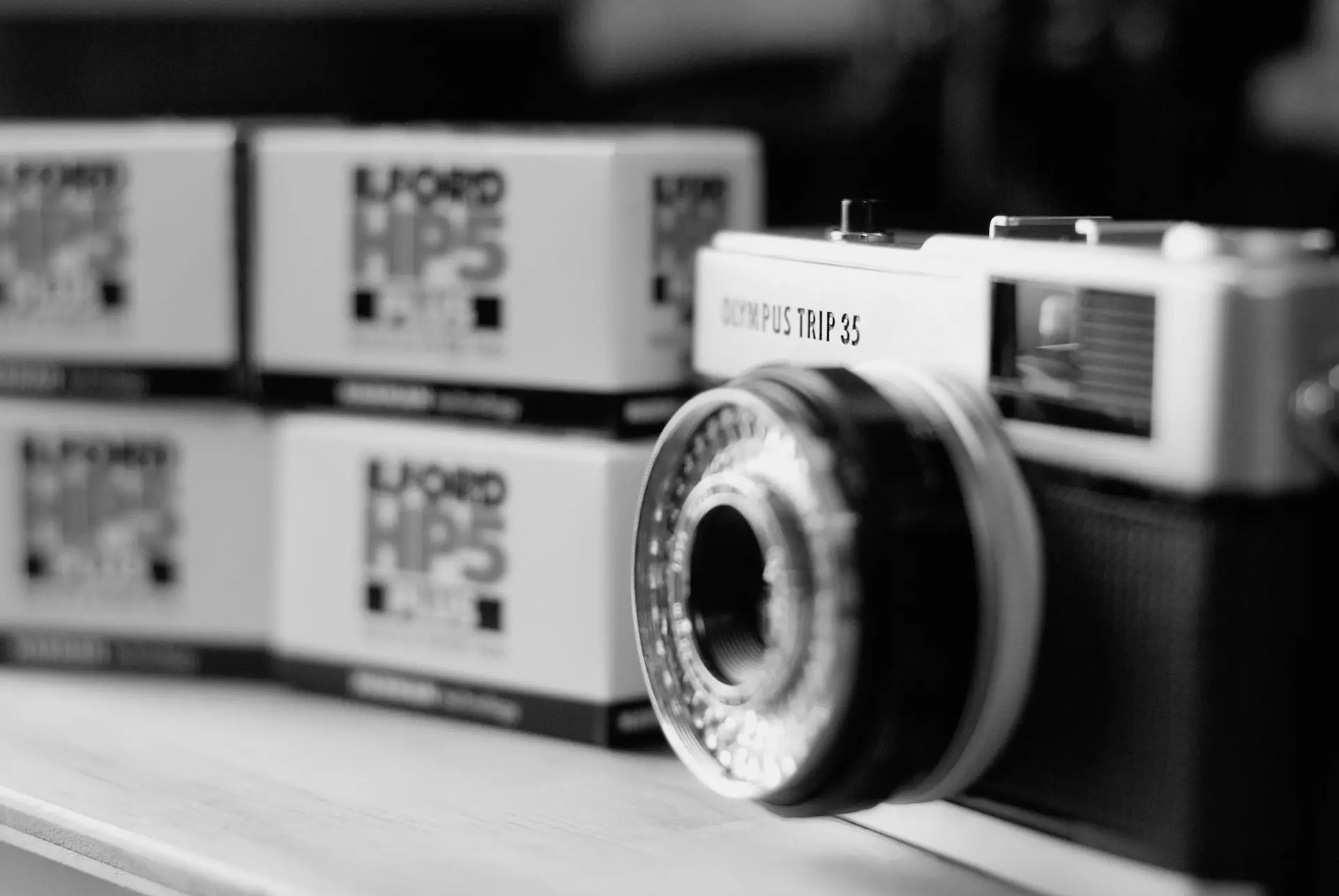








Comments
Terry B on My First Two Rolls of Film – HP5+ in a Trip 35 – By Stevenson Gawen
Comment posted: 15/06/2022
Comment posted: 15/06/2022
Billy Sanford on My First Two Rolls of Film – HP5+ in a Trip 35 – By Stevenson Gawen
Comment posted: 15/06/2022
Comment posted: 15/06/2022
Comment posted: 15/06/2022
Don Goodman-Wilson on My First Two Rolls of Film – HP5+ in a Trip 35 – By Stevenson Gawen
Comment posted: 15/06/2022
Also: I love the shot of the dogs playing, very dynamic composition!
Comment posted: 15/06/2022
Steven G on My First Two Rolls of Film – HP5+ in a Trip 35 – By Stevenson Gawen
Comment posted: 15/06/2022
Dan on My First Two Rolls of Film – HP5+ in a Trip 35 – By Stevenson Gawen
Comment posted: 15/06/2022
Comment posted: 15/06/2022
Gary on My First Two Rolls of Film – HP5+ in a Trip 35 – By Stevenson Gawen
Comment posted: 16/06/2022
Comment posted: 16/06/2022
Comment posted: 16/06/2022
Comment posted: 16/06/2022
Wouter Willemse on My First Two Rolls of Film – HP5+ in a Trip 35 – By Stevenson Gawen
Comment posted: 16/06/2022
Usually, images developed with monobath solutions don't blow me away, but you definitely got some really nice results out of it!
Comment posted: 16/06/2022
Khürt Williams on My First Two Rolls of Film – HP5+ in a Trip 35 – By Stevenson Gawen
Comment posted: 16/06/2022
There’s more (dodging and burning, etc. ) depending on how much you want to do. You can also adjust the white balance, etc. in whatever software you want if that helps achieve the results you want.
Comment posted: 16/06/2022
RoboJ1M on My First Two Rolls of Film – HP5+ in a Trip 35 – By Stevenson Gawen
Comment posted: 17/06/2022
I'd forgotten all about it.
I too was about 10 and shot a few rolls of a family holiday in Spain.
Up in my parents loft at this point I suspect.
Don't jump to SLR too quickly, that 40mm on the Trip 35 is a beautiful lens, with its funny solar powered light meter.
There's a lot to be said for fixed prime rangefinders, I'm thinking about finding something with a few more controls but still a fixed prime.
Comment posted: 17/06/2022
Jay Dann Walker in Melbourne, Australia on My First Two Rolls of Film – HP5+ in a Trip 35 – By Stevenson Gawen
Comment posted: 17/06/2022
In fact, we should all consider doing it at some time or another. To take us back to a time when photography was like that, not so much about gear, but about making pictures (or as Kodak so widely publicised it for many decades in its best-known how to book, 'How To Take Good Pictures').
The trip 35 is a fine camera to do this. I no longer have one, but my (definitely upmarket) choice when I feel like doing this is a Contax G1 with either the legendary Zeiss Planar 45/2.0, the just-as-good Planar 35/2.0, or the Biogon 28/2.8, depending on the subject matter I've decided to do that day (in lens/assignment order, street/candids, slightly surreal landscapes, or architecture).
I then go out and do it. Shoot the entire roll. Try to keep my brain focussed (bad pun, yes, I know) on the subject I've chosen for the day, and just - shoot. Using film makes me think more about what I'm seeing as well as photographing, but sometimes I find I slip into a mental state which I can only describe as "free-floating" where my seemingly unoccupied brain leads me into new areas I've not consciously worked out.
Afterwards, when I view the results I often find elements in my images that my conscious didn't pick up at the time, but something else in my head did. Which sort of opens up all sorts of new mental dimensions for me. There is something quite surreal about all this - I can't really figure it out, but it's there. Other than saying this, I can't really explain it, not easily anyway. But it works for me. And it may work for you, if you try it.
I process the film conventionally, using mostly Kodak D76 but on occasion an old MQ developer I home-brew. As I usually scan these negatives, I process slightly less than the recommended time, as I find my Plustek gives better mid-tones and beautiful, deep, dark shadows which I particularly like in my outdoor images.
Nice images you included with the article, Stephen. The cat and dog shot, the chooks, the playing dogs, are gorgeous. As for dust and grit on your negatives, try rewashing them for say 20-30 minutes and give them a final rinse in filtered or demineralised water (you can find the latter in the laundry section of your local supermarket - for me, distilled water is too expensive in Australia for this) to which you have added a scant few drops of good dish detergent. You may find the grit washes off. Or you may find it doesn't wash off. This happens. It's something to be lived with. Photoshop or Lightroom will become a good friend. Personally, I despise dust-spotting like the plague, but you know, YMMD.
That's it from me. Load up that Trip and go out shooting again. I've not been to Cooma since 2004, but it's a grand place to be out and about with a film camera.
From Dann in Melbourne
Comment posted: 17/06/2022
Comment posted: 17/06/2022
sonny rosenberg on My First Two Rolls of Film – HP5+ in a Trip 35 – By Stevenson Gawen
Comment posted: 17/06/2022
Comment posted: 17/06/2022
Comment posted: 17/06/2022
Comment posted: 17/06/2022